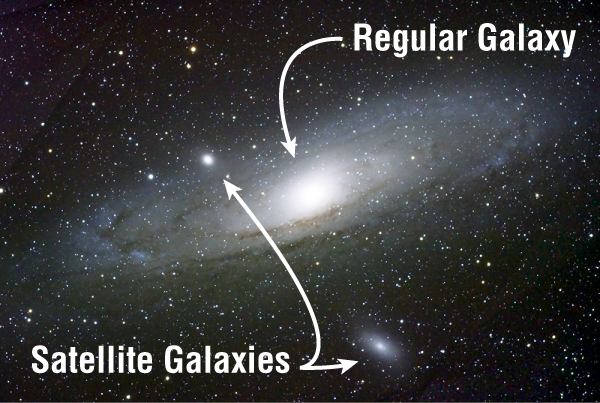Our magnificent Milky Way galaxy, a sprawling spiral of hundreds of billions of stars, isn't alone in the vast expanse of the cosmos. It presides over a retinue of smaller galaxies, each a captivating island universe in its own right. These celestial companions, known as satellite galaxies, offer a glimpse into galactic interactions and the dynamic nature of our universe.
Imagine the Milky Way not just as a vast stellar metropolis, but as a central hub orbited by smaller stellar communities. These smaller galaxies, while possessing their own collections of stars, gas, and dust, are gravitationally bound to the Milky Way, tracing intricate paths around its center. Studying these satellite galaxies provides invaluable insights into galaxy formation, evolution, and the potential future of our own Milky Way.
The Milky Way boasts a retinue of satellite galaxies, each with unique characteristics. The largest and most prominent member of this entourage is the Large Magellanic Cloud (LMC). Located approximately 163,000 light-years from the Milky Way's center, the LMC is a breathtaking irregular galaxy, lacking the distinct spiral arms that grace our own galaxy. This asymmetry is likely a consequence of gravitational interactions with the Milky Way and other nearby galaxies.
Determining the closest satellite galaxy to the Milky Way presents a bit of an astronomical mystery. A strong contender is the Sagittarius Dwarf Spheroidal Galaxy (SagDEG). This faint, dwarf galaxy resides roughly 50,000 light-years from the Milky Way's center, tracing a unique orbit that takes it above and below the galactic plane, much like a ring encircling a spinning top.
However, an even closer potential satellite galaxy has emerged in recent years – the Canis Major Dwarf Galaxy. This intriguing object, located just 25,000 light-years from our solar system, is so close to the edge of the Milky Way that it's closer to us than to the galactic core. Estimated to contain roughly a billion stars, the Canis Major Dwarf Galaxy blurs the lines between a distinct galaxy and a dense concentration of stars within the Milky Way itself. Astronomers are still debating its official classification.
Where Does One Galaxy End and Another Begin?
The proximity of the Canis Major Dwarf Galaxy raises a fascinating question: at what point does a collection of stars become a separate galaxy? This question lies at the heart of ongoing research. Some astronomers believe that the Canis Major is not a distinct galaxy but rather an extension of the Milky Way, a particularly dense region of stars gravitationally bound to our galactic giant. Alternatively, it could be a dwarf galaxy in the early stages of being devoured by the Milky Way's immense gravity. Over time, the gravitational pull of the Milky Way could draw the Canis Major Dwarf Galaxy even closer, ultimately leading to a full-fledged merger, creating an even more massive Milky Way.
The Impact of Satellite Galaxies
The presence of satellite galaxies isn't merely a celestial curiosity. These smaller companions can have a significant impact on the Milky Way's evolution. The gravitational tugs of these galaxies can trigger star formation within the Milky Way's disk, potentially influencing the birth of new stellar nurseries and the overall structure of our galaxy. Additionally, studying satellite galaxies provides invaluable insights into galaxy formation and evolution in the early universe. By analyzing their properties, astronomers can piece together the grand narrative of how galaxies like our Milky Way came to be.
Satellite galaxies serve as invaluable cosmic laboratories, offering us a glimpse into the universe's past and a potential preview of its future. By studying their characteristics, we can gain a deeper understanding of the processes that govern galaxy formation and evolution. These smaller galaxies may also hold clues about the nature of dark matter, the mysterious invisible substance that is thought to constitute a significant portion of the universe's mass.
Tags:
Cosmology

